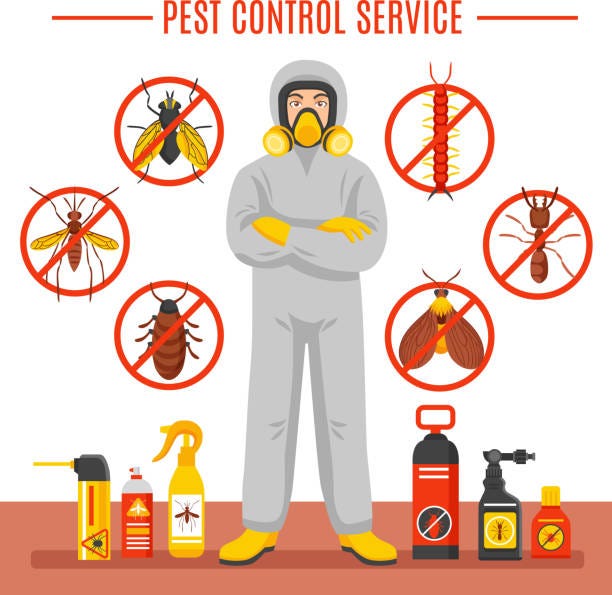A1 Bed Bug Exterminator Charlotte - Reliable and Cost Effective Services
A1 Bed Bug Exterminator Charlotte - Reliable and Cost Effective Services
Blog Article
Bed Insect Therapy Break Down: Comparing Chemical Vs. Non-Chemical Solutions
In the realm of pest control, particularly when handling the persistent problem of bed insects, the choice between chemical and non-chemical therapy services can be a pivotal one. Both methods supply unique advantages and downsides, affecting factors such as performance, security considerations, and overall cost. By analyzing the nuanced details of each technique, a clearer understanding of which course to seek in resolving a bed bug problem can be achieved.
Effectiveness of Chemical Therapies
Chemical treatments for bed insect invasions have actually been commonly identified for their potent and quick efficiency in eliminating these parasites. When thinking about the effectiveness of chemical treatments, it is crucial to understand that they can provide a thorough and fast option to a bed pest trouble. Specialist pest control men frequently depend on pesticides to target bed pests at numerous stages of their life process, including grownups, eggs, and nymphs. These chemicals typically function by disrupting the bed insects' nerves, leading to paralysis and ultimate death.
In addition, chemical therapies have the benefit of supplying residual impacts, meaning that they can continue to remove bed insects also after the preliminary application. This residual action is specifically advantageous in combating any possible re-infestations. In addition, the quick activity of chemical therapies can bring alleviation to people encountering extreme bed pest problems, permitting them to reclaim control of their space promptly.
Safety Problems With Chemical Solutions
One crucial element that calls for mindful factor to consider when making use of chemical remedies for bed bug therapy is ensuring the safety of occupants and the environment. Direct exposure to particular chemicals used in bed bug therapies can lead to respiratory issues, skin inflammation, or other damaging reactions, specifically in people with pre-existing conditions or level of sensitivities.
In addition, the environmental impact of chemical solutions is an additional substantial factor to consider. Some pesticides made use of in bed insect therapies might be hazardous to valuable insects, wild animals, and ecosystems if they leach into the soil or water systems. It is vital to use chemical treatments sensibly, complying with safety standards, and thinking about much less poisonous choices to mitigate these dangers and make sure the secure and reliable management of bed pest invasions.
Advantages of Non-Chemical Methods
Thinking about the possible safety and security issues and environmental effect linked with chemical services for bed pest treatment, exploring non-chemical approaches offers a promising choice with a number of unique benefits. Non-chemical treatments are ecologically friendly, as they do not contribute to air or water air pollution, making them a sustainable option for parasite control.
Furthermore, non-chemical services can be efficient in targeting bed pests, including hard-to-reach areas where chemical therapies might not penetrate - A1 bed bug exterminator charlotte. Techniques such as warm therapy, vacuuming, vapor cleansing, and bed mattress content coverings give comprehensive obliteration without the use of unsafe chemicals.
Limitations of Non-Chemical Treatments

Furthermore, non-chemical therapies often require several applications to accomplish successful Get More Info elimination. This can be taxing and may not constantly assure total removal of all bed bugs and their eggs, especially in covert or hard-to-reach places.
Moreover, the success of non-chemical therapies greatly depends on appropriate execution and thoroughness, which can be challenging for individuals without specialist knowledge. Poor application of non-chemical approaches might cause insufficient obliteration, bring about relentless problems and the demand for additional therapies.
Consequently, while non-chemical therapies have their advantages, it is vital to recognize these restrictions and consider them when determining one of the most try these out efficient method for handling bed pest invasions.
Price Comparison: Chemical Vs. Non-Chemical Options
Offered the limitations linked with non-chemical treatments, an important aspect to assess in the context of bed bug management is the expense comparison in between chemical and non-chemical choices. In contrast, non-chemical therapies like heat treatment or vapor can be much more expensive, with costs ranging from $1,000 to $6,000 for a whole home. While the initial cost of chemical treatments may seem lower, multiple treatments might be required to totally eradicate the problem, possibly enhancing the general price.
Verdict

Taking into consideration the prospective security issues and environmental influence associated with chemical services for bed insect treatment, checking out non-chemical strategies presents a promising option with a number of unique advantages.Offered the constraints associated with non-chemical treatments, an important element to examine in the context of bed bug management is the expense comparison between chemical and non-chemical alternatives. In comparison, non-chemical therapies like warmth therapy or heavy steam can be much more costly, with costs ranging from $1,000 to $6,000 for an entire home. While the first price of chemical therapies may appear lower, numerous therapies might be needed to fully remove the invasion, potentially raising the total price.In conclusion, when comparing chemical and non-chemical bed pest treatment alternatives, it is necessary to take into consideration performance, security, benefits, limitations, and expense.
Report this page